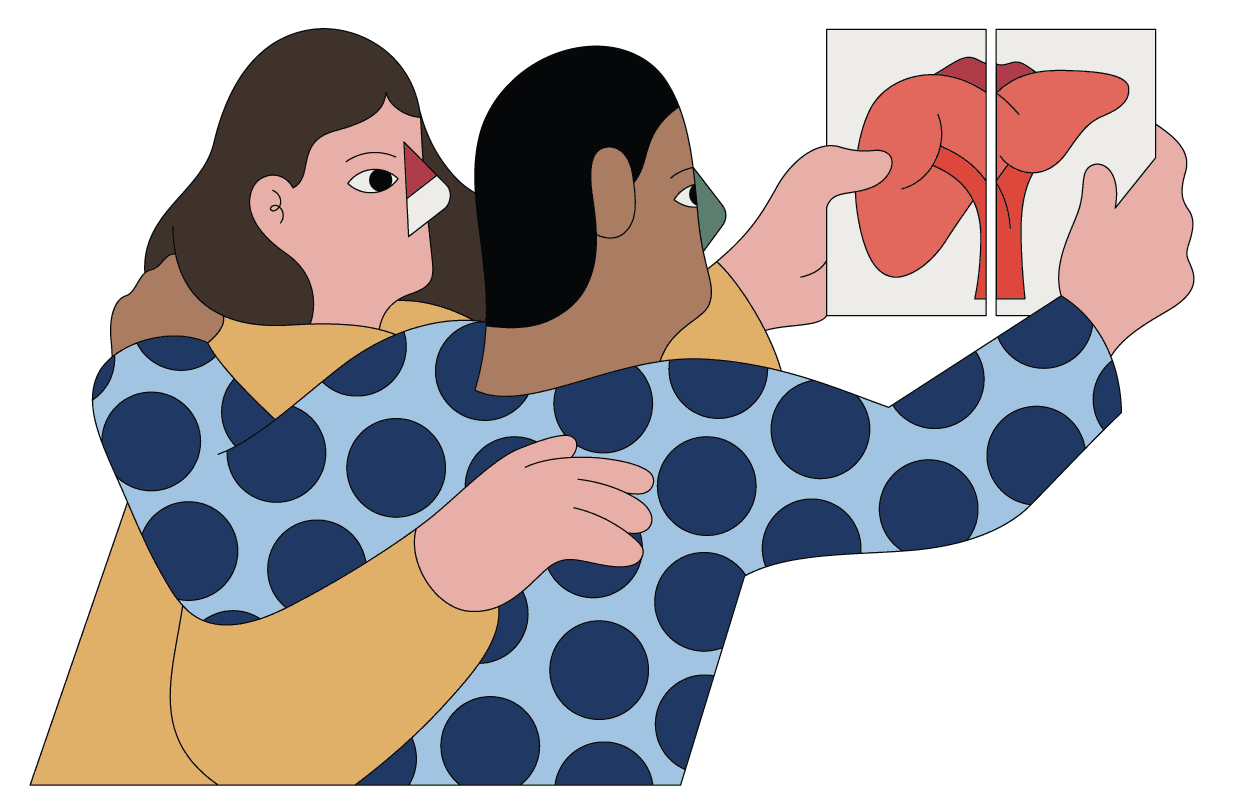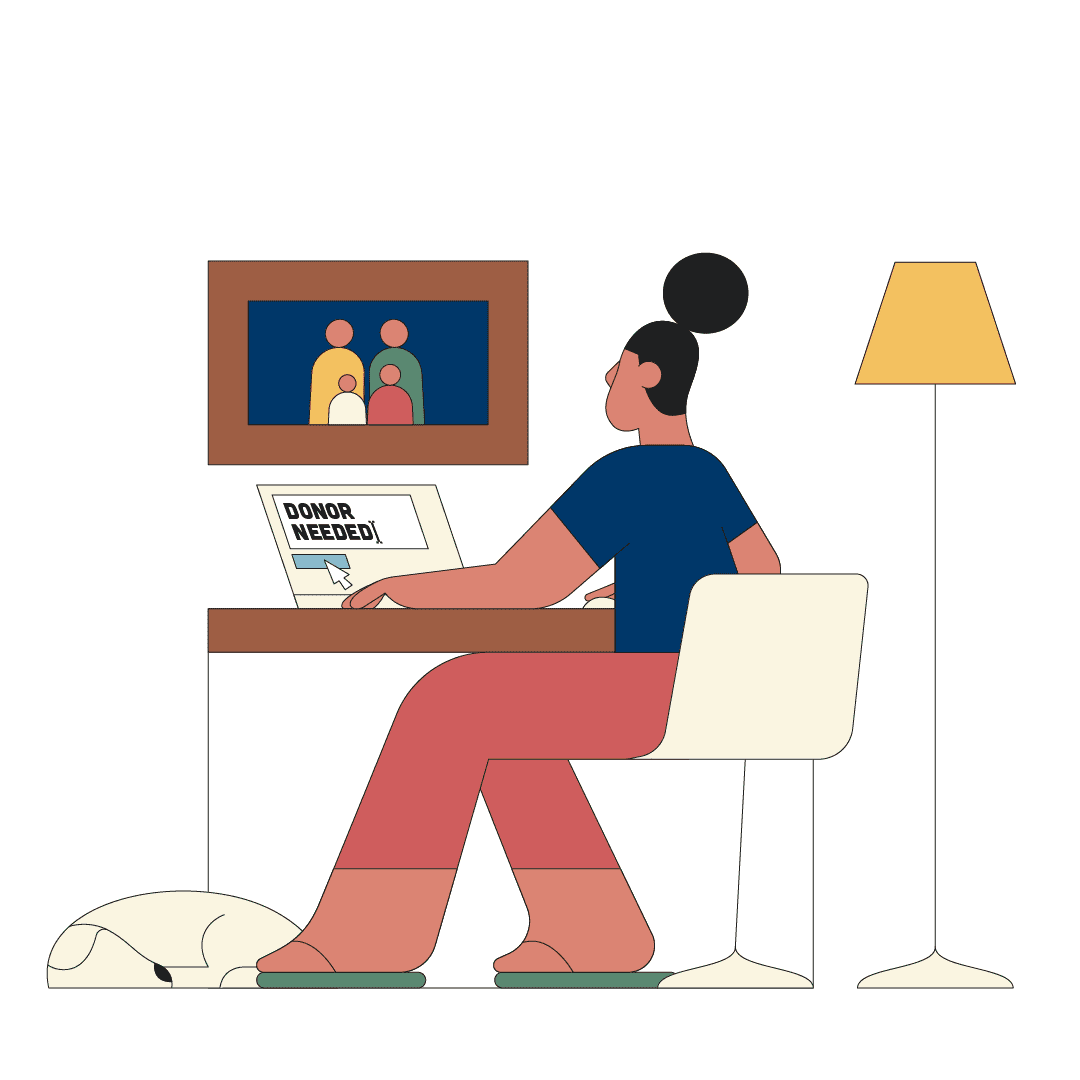I’m interested in becoming a living organ donor
Montefiore Einstein Center for Transplantation is among the highest ranking in the nation for living organ donor transplants. We also have the highest success rates for pancreas and heart transplant in the region. Our pediatric transplant services are internationally recognized, with a focus on difficult and high-risk cases.
With over 60 years of experience in adult and pediatric transplantation, we offer outstanding programs in heart, lung, liver, kidney and pancreas transplantation. We complete hundreds of transplants annually and we’re leaders in the field of live donation. Our breakthroughs with minimally invasive techniques have made a range of transplant surgeries safer, simpler and easier on our patients.
I'm interested in becoming a:
Living Kidney Donor Living Liver Donor
60+ Years Experience — One Of The Longest-Running Kidney Transplant Programs In The World.
Becoming a living kidney donor
Living organ donation can significantly shorten wait times for patients, and for those with renal failure, it can have life-saving results. With over 100,000 patients currently on the wait-list for a kidney transplant in the United States, finding a donor represents the primary challenge of transplantation.
What is living kidney donation?
The first successful living organ donor kidney transplant took place in the 1950s, and since then, many thousands of people have donated their kidney to someone with advanced chronic kidney disease. Living kidney donation for transplantation is unique in that a perfectly healthy person chooses to have surgery to help or benefit someone else.
A kidney transplant is the process of surgically removing a kidney from a donor and implanting it into a person whose kidney no longer works. This is a preferred treatment option for many, because patients often live longer and have a better quality of life than they would on dialysis.
The benefits
Living organ donors make the best donors. That’s because living organ donor kidneys usually last longer and start to work faster than deceased donor kidneys. Living organ donor transplants have a first-year success rate of over 95 percent. In addition, patients can plan for their transplant. Some patients may receive a kidney transplant before they must start dialysis.
What to expect
All surgeries have risks. However, living kidney donation has been performed for many years and shown to be a safe procedure for healthy people. Every year, 5,000 to 6,000 people across the country donate their kidneys. Our team will perform a thorough evaluation—including a number of tests—to make sure that your risk is as low as possible.
Living kidney donation used to involve a large incision (surgical cut), more complications after surgery and a longer recovery period. Today, laparoscopic kidney donation makes it possible to do the entire surgery by making small holes in the abdomen. Doctors insert instruments and a miniature video camera through those holes. A surgeon performs the whole operation while viewing a monitor. With laparoscopic surgery, donors have less pain, fewer and smaller scars, a shorter hospital stay, quicker recovery and a faster return to normal activities.
Who qualifies as a living kidney donor?
Kidneys can be donated by anyone who’s healthy and over 18 years of age —be it a family member like a parent, child or other relative, or someone emotionally connected to the recipient, like a spouse or friend. Altruistic kidney donations made by a stranger or Good Samaritan can come from living organ donors who are at least 21 years old.
How to get started
If you are interested in being evaluated as a living donor please contact our Living Donor Team at 1-844LIVEDON (1-844-548-3366). Living organ donor applicants can also get started online by clicking the link below to fill out an initial questionnaire.
100%: survival of patients receiving live donor adult liver transplants.
Becoming a living liver donor
The Montefiore Einstein Center for Transplantation is among the highest ranking in the nation for living organ donor transplants. For a patient in need of a liver transplant, live liver donation can help shorten often lengthy wait times and expedite surgery, allowing for potentially life-saving results.
Live liver donors offer tremendous benefits not just to the patient, but also to the entire patient community. Their generous donation helps increase the pool of livers available, enabling more patients to have access to a transplant.
What is living liver donation?
While livers on the United Network for Organ Sharing (UNOS) wait-list come from deceased donors, living organ donation transplants come from live donors. In living organ donation, part of the donor’s liver is removed and used to replace the patient's diseased liver. With time, both the patient's transplanted liver and the donor's remaining liver grow back to full size. Our Montefiore Einstein Center for Transplantation offers live donor liver transplantation for adults and children on the transplant wait-list who have found compatible live donors.
The benefits
- Live donation can help recipients avoid lengthy wait times for a donor liver.
- Live donation increases the pool of available donor livers for everyone.
- The timing of transplantation can be controlled and conveniently scheduled.
- Some patients with liver tumors, cholestatic diseases or certain blood types may respond better to a live donor's liver than to one from a deceased donor.
- For recipients, the live donor transplant success rate is equal to that of the deceased donor success rate.
- Live donation may be beneficial for pediatric patients, who are typically disadvantaged because of the lack of suitable size matches from deceased donors.
What to expect
Donor and recipient surgeries typically take place simultaneously in different operating rooms, each with their own dedicated surgical team. The donor operation typically takes between three to four hours. Following surgery, donors can expect to recover in-hospital for about one week, during which time they are monitored with imaging and blood tests. Donors are advised to limit their physical activities for two to three months after surgery.
Who qualifies as a living liver donor
A living organ donor can be a relative, friend or simply an altruistic stranger. All donors can remain anonymous, if they so choose. Donors must be healthy adults under age 55, with a normal weight (BMI less than 30) and no major existing medical issues. All candidates undergo a thorough independent screening process, where they’re provided extensive education about the surgery and informed of any potential risks. In the instance a candidate lives far away, a portion of the evaluation can be done remotely.
How to get started
If you are interested in being evaluated as a living donor please contact our Living Donor Team at 1-844LIVEDON (1-844-548-3366). Living organ donor applicants can also get started online by clicking the link below to fill out an initial questionnaire.
Among the best Liver Transplant Survival Rates in the Country.
Become a living organ donor with a national leader in transplant
There are currently hundreds of Montefiore Einstein patients seeking the liver or kidney that could save their life. Their survival depends on the generosity of living organ donors like you.
Or call 1-844LIVEDON (1-844-548-3366)
Are you seeking a life-saving kidney or liver transplant?
Contact the Montefiore Einstein Center for Transplantation for more information at transplant@montefiore.org or call:
Living Organ Donor Kidney
1-877CUREKDNY (1-877-287-3536)
Living Organ Donor Liver
1-888RXLIVER (1-888-795-4837)



